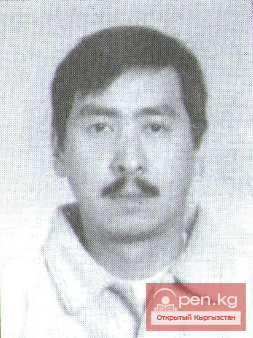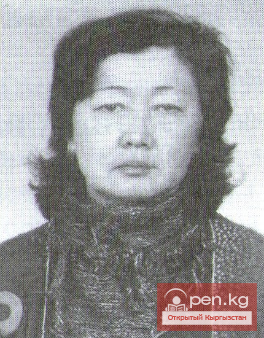
Opening of the Sculpture Park in Frunze.
The opening of new opportunities for sculptors in the republic in the field of monumental-decorative plastic art is facilitated by the practice of holding sculpture symposiums. In 1984, an inter-republican plein air sculpture event took place in Frunze. The stone works (limestone), created by sculptors representing various plastic schools of the country, as well as sculptures donated to the republic from the funds of the Ministry of Culture and the Union of Artists of the USSR, became the foundation of the sculpture park opened in Frunze. In 1985, the first International Sculpture Symposium in the country was held in Frunze, using local materials extracted from the depths of the Kyrgyz mountains (marble, dolomite), under the motto "Our Contemporary in Life and Work." It featured masters of Soviet art as well as prominent representatives of sculpture from Hungary, Poland, Cuba, and Vietnam. The works created and installed in the sculpture park impress with their vivid imagery and aesthetically enrich the capital.
Kyrgyz sculptors 3. Khabibulin, V. Shestopal, D. Zholchuev, and A. Sharshikeev participated in the symposiums. The works they created, which enriched the sculpture park, are diverse in themes, compositional and plastic techniques. The narrative character of the interpretation of the image of the Kyrgyz woman as a worker and mother distinguishes the composition "Expectation" by V. Shestopal (1984). It is executed in the traditions of solid realistic plasticity without particular attention to the decorative expressiveness of the plastic language.
The traditional image of a hunter with a falcon, characteristic of Kyrgyz art, was dedicated to the composition "Memories of Fathers" by A. Sharshikeev (1984). The emphasized vertical volume of the figure is carved succinctly and decisively. In its compositional structure, principles of generalization, and surface treatment, the artist's orientation towards the use of the monumental effect of the stone Turkic sculptures from the medieval era, common in Kyrgyzstan, is evident. The ancient means of sculptural expressiveness are subordinated to the expression of the currently relevant idea of harmonious unity between man and nature. In his composition, the decorative and conditional depiction of the old Kyrgyz hunter and the free bird that clings to him symbolizes the people's love for nature and their careful attitude towards it.
Focusing on the decorative-spatial aspect of sculpture, D. Zholchuev created the work "Chokuda" ("On the Summit") (1985). The figure of the rider wrapped in a cloak on a symbolic rock is strongly generalized but gives an accurate sense of height, gusts of wind, and the resistance of man against the forces of nature.

One of the significant works in terms of international breadth of concept and diversity of plastic image is the sculpture by 3. Khabibulin "Interrupted Song" (1983), dedicated to the Chilean singer of freedom Victor Jara. This work vividly represents the sharpness of feelings, professional problems, and the plastic culture of the author, who is well acquainted with the achievements of world sculpture, from the high examples of classical sculpture to the modern explorations of the British innovator of monumental-decorative plastic art, Henry Moore. However, having made a brilliant statement for the creation of a socially charged work, 3. Khabibulin was unable to plastically and fully realize such a strong, dramatically poignant idea in a short time. The outstretched figure of the talented musician and political fighter, with a guitar still not released from his hands, presents the scene of his tragic, violent death. It is sharply conceived but not brought to compositional-plastic completeness, which results in a lack of a cohesive artistic impression.

Original works that possess the strength of ideological and artistic impact and the ability to exist in the open space of the city were created by S. Kazaryan (Armenia), D. Tugarinov (Moscow), Frich (Poland), Hadik (Hungary), Antonio Dias (Cuba), demonstrating the diversity of stylistic explorations in contemporary monumental-decorative plastic art.
Of course, not all compositions created by participants of the two plein airs in Frunze possess high quality and viability in the environment, in synthesis with nature and the architecture of the city. Alongside substantive, emotionally charged works with decorative expressiveness of form, there are pieces where the formal-technical aspect predominates or a prosaic, poorly formed approach to the theme is evident. But this does not overshadow the main point — the undeniable fruitfulness of such international creative associations. In the life of Kyrgyzstan, where the mass emergence of sculpture into the environment is just beginning, the activities of the symposiums are especially relevant and will undoubtedly contribute to the development of diverse sculptural forms and the further growth of the plastic culture of the republic.












































